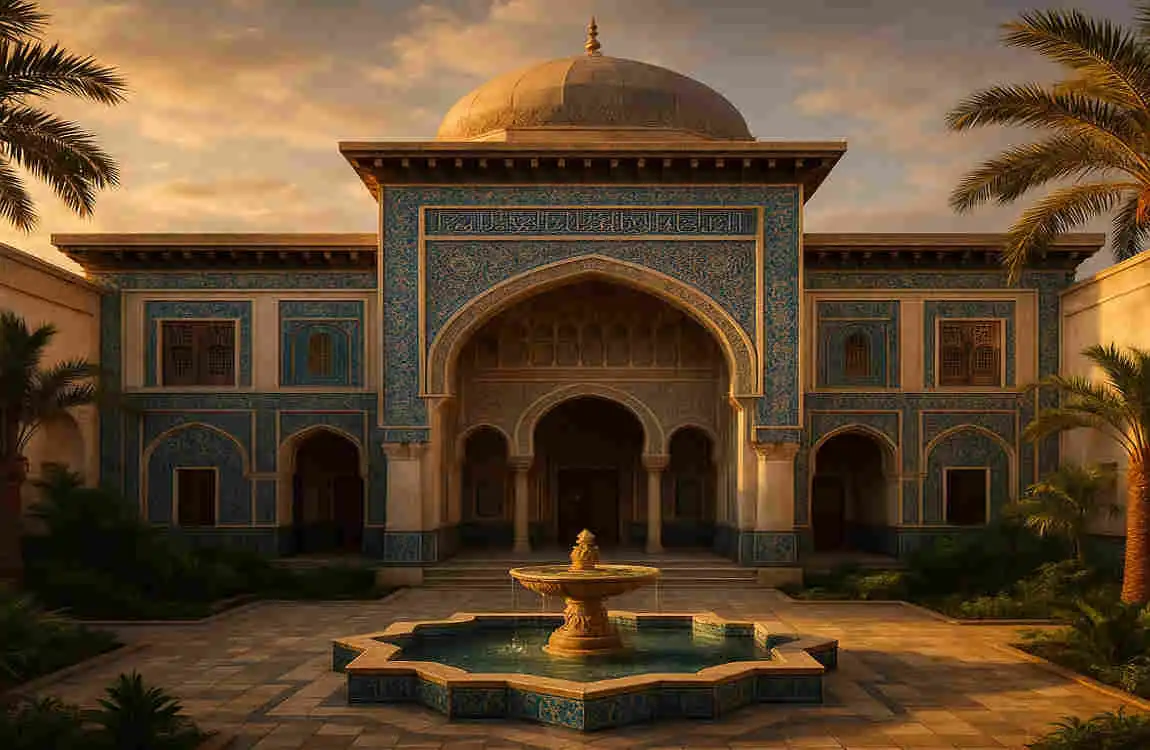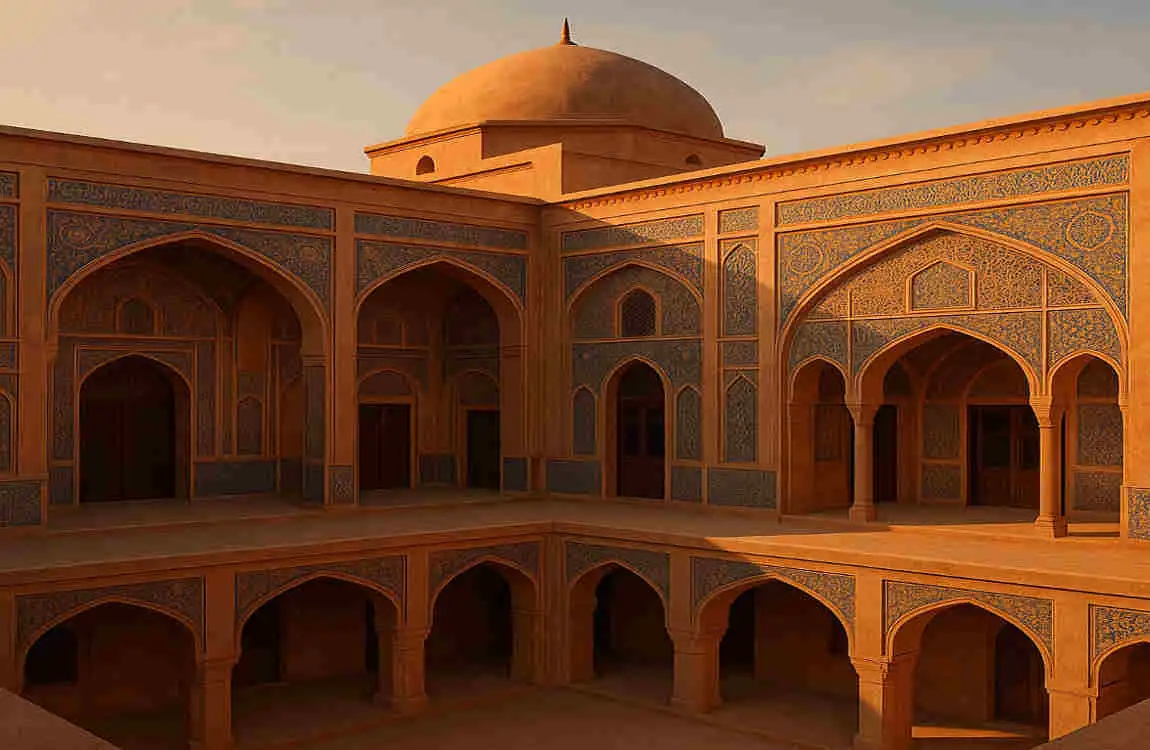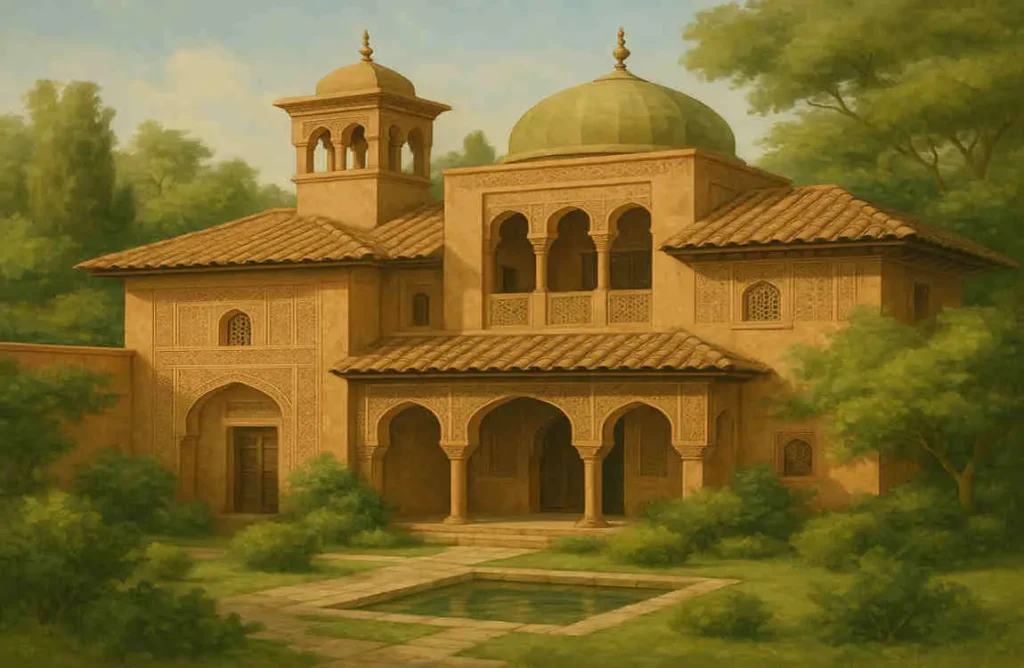Islamic architecture is a timeless and captivating design style that reflects the rich cultural and spiritual heritage of the Islamic world. Its intricate patterns, harmonious proportions, and serene spaces have inspired architects and homeowners for centuries. Today, many people are drawn to the idea of incorporating these elements into their homes, creating spaces that are not only beautiful but also deeply meaningful.
Understanding the Core Principles of Islamic Architecture

Islamic architecture is more than just a style; it’s a philosophy rooted in spirituality, culture, and a deep connection to the divine. To truly incorporate Islamic elements into your home, it’s essential to understand the principles that guide this architectural tradition.
Key Principles of Islamic Architecture
- Tawhid (Unity of God):
- This principle emphasizes the oneness of God, which is often reflected in the symmetry and harmony of Islamic architecture and design. Geometric patterns and repetitive motifs symbolize infinity and divine unity.
- Ihtiram (Respect):
- Respect for the environment, community, and personal space is a fundamental principle in Islamic architecture. Homes are designed to provide privacy and comfort while maintaining harmony with the surroundings.
- Ikhlas (Sincerity):
- Sincerity in design means creating spaces that are functional, modest, and unadorned.
- Ilm (Knowledge):
- Islamic architecture frequently incorporates elements that foster learning and reflection, including libraries, study areas, and spaces for contemplation.
- Iqtisad (Balance):
- Balance is achieved through proportionate designs, symmetry, and the thoughtful use of materials and colors.
- Haya’ (Modesty):
- Modesty is reflected in the design of private spaces, such as courtyards and screened windows, which ensure privacy without compromising aesthetics.
- Dikr (Remembrance):
- Many Islamic homes feature elements that remind their inhabitants of their faith, such as calligraphy with Quranic verses or a dedicated prayer space.
- Urf (Locality and Custom):
- Islamic architecture respects local traditions and materials, blending them with universal Islamic principles.
By understanding these principles, you can create a home that not only looks Islamic but also embodies the values and spirituality of the tradition.
Key Architectural Features to Incorporate in an Islamic House
Islamic architecture is known for its distinctive features, which combine functionality with artistic beauty. Here are some key elements you can incorporate into your Islamic house:
You may also read (who is the best house architec in the world).
Geometric Patterns and Arabesquesre
Geometric patterns are a hallmark of Islamic design. These intricate, repetitive designs symbolize infinity and the unity of creation. You can incorporate them into your home in various ways:
- Wall Art and Tiles: Use geometric tiles for kitchen backsplashes, bathroom walls, or accent walls in living spaces.
- Flooring: Mosaic or patterned tiles can add a touch of elegance to your floors.
- Furniture: Look for furniture with carved geometric designs or inlaid patterns.
Calligraphy
Islamic calligraphy is both an art form and a spiritual expression. Quranic verses or meaningful phrases can be used as decorative elements in your home:
- Entrances: Place calligraphy above doorways to create a welcoming and spiritual atmosphere.
- Living Rooms: Hang framed calligraphy art as a focal point.
- Prayer Spaces: Use calligraphy to enhance the serenity of your prayer area.
Courtyards and Gardens
The traditional Islamic courtyard, known as a Sahn, is a private and tranquil space often found in Islamic homes. Here’s how you can incorporate this feature:
- Courtyards: Create an open-air courtyard with seating areas and greenery.
- Water Features: Add a fountain or small water channel to evoke a sense of peace and reflection.
Arches and Domes
Arches and domes are iconic features of Islamic architecture. While domes may not always be practical in modern homes, you can still incorporate these elements:
- Arches: Use horseshoe, pointed, or multifoil arches for doorways, windows, or niches.
- Domes: Consider symbolic representations of domes through ceiling designs or skylights.
Muqarnas (Stalactite Vaulting)
Muqarnas are decorative architectural elements that add depth and texture to ceilings or walls. While traditionally used in mosques and palaces, they can be adapted for modern homes:
- Use muqarnas-inspired designs for ceiling corners or as decorative moldings.
Light and Shadow Play
Islamic architecture often uses light and shadow to create dynamic and serene spaces:
- Mashrabiya Screens: These lattice screens provide privacy while allowing natural light to filter through, creating beautiful patterns of light and shadow.
- Windows: Use stained glass or patterned window films to add color and texture.
Materials and Colors
Islamic design emphasizes natural materials and earthy tones:
- Materials: Incorporate stone, wood, plaster, and ceramics for an authentic look.
- Colors: Use a palette of earthy tones (beige, terracotta) combined with jewel tones (emerald green, sapphire blue, gold).
Practical Tips for Designing an Islamic House Interior

Designing the interior of an Islamic house requires careful attention to detail. Here are some practical tips to help you create a harmonious and functional space:
Creating a Prayer Space
A dedicated prayer space is an essential feature of an Islamic home:
- Orientation: Ensure the space faces the Qibla (direction of Mecca).
- Design: Keep the area minimalistic and serene, with a prayer mat, Quran stand, and soft lighting.
Furniture and Decor
You may also read (what size shipping container is best for a house).
Choose furniture and decor that reflect Islamic aesthetics:
- Motifs: Look for pieces with geometric patterns, arabesques, or calligraphy.
- Modesty: Avoid overly ornate or extravagant designs to maintain a sense of modesty.
Color Palette
Islamic interiors often feature a rich and symbolic color palette:
- Blues and Greens Represent tranquility and paradise.
- Golds: Symbolize divine light and luxury.
- Earthy Tones: Create a warm and grounded atmosphere.
Incorporating Islamic Art
Islamic art can add character and depth to your home:
- Paintings: Choose artwork inspired by Islamic patterns or calligraphy.
- Ceramics and Textiles: Use decorative plates, vases, or cushions with Islamic designs.
Balancing Modern and Traditional
It’s possible to blend contemporary design with Islamic elements:
- Use modern furniture with subtle Islamic patterns.
- Combine traditional materials like wood and stone with sleek, minimalist designs.
Landscaping and Exterior Design for an Islamic House
The exterior of your home can also reflect Islamic architectural principles. Here are some ideas:
Gardens Inspired by Paradise
Islamic gardens are designed to evoke the concept of paradise:
- Symmetry: Create a symmetrical layout with pathways and flower beds.
- Water Channels: Incorporate fountains or small water channels for a calming effect.
Exterior Facades
The facade of your home can feature Islamic design elements:
- Mashrabiya Screens: Use latticework for windows or balconies.
- Arches and Domes: Incorporate subtle arches or dome-like structures.
Local Materials
Respect the principle of Urf by using materials that are locally available and sustainable.
Benefits of Incorporating Islamic Architecture in Your Home
Incorporating Islamic architecture into your home offers numerous benefits:
- Spiritual Connection: Create a space that fosters peace and mindfulness.
- Aesthetic Appeal: Add timeless beauty and uniqueness to your home.
- Harmony with Nature: Design spaces that are in tune with the environment.
- Increased Property Value: Distinctive designs can enhance the value of your property.
Common Challenges and How to Overcome Them
While designing an Islamic house, you may face some challenges:
- Balancing Tradition and Modernity: Work with architects who understand both styles.
- Finding Skilled Artisans: Look for specialists in Islamic design or explore online platforms for skilled artisans.
- Budget Constraints: Prioritize key features and use affordable alternatives.
Resources and Inspiration for Your Islamic House Project
Here are some resources to help you get started:
- Books and Websites: Explore literature on Islamic architecture for ideas.
- Architects: Consult professionals specializing in Islamic design.
- Online Platforms: Find Islamic art and decor on websites like Etsy or local marketplaces.
You may also read (discover the unique charm of castle house st george).

